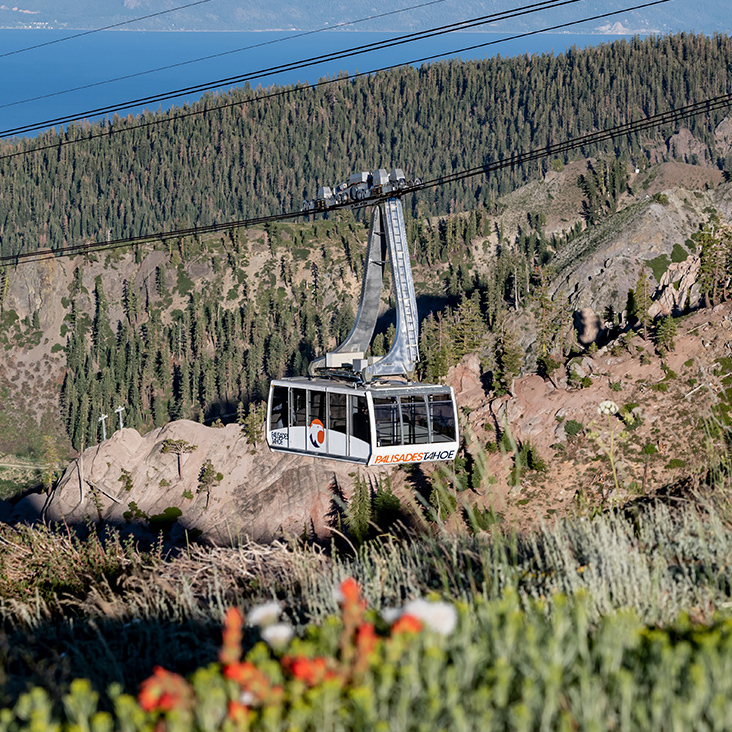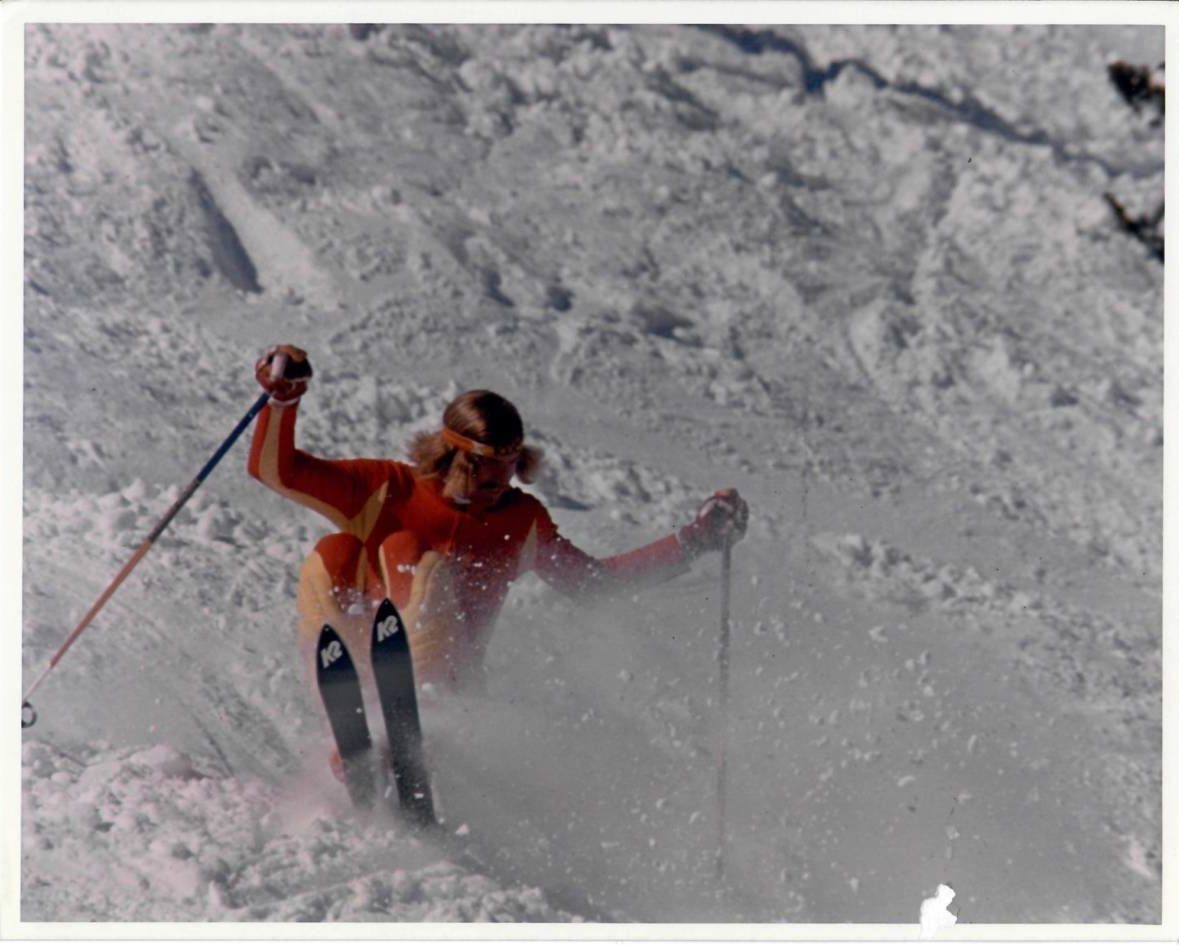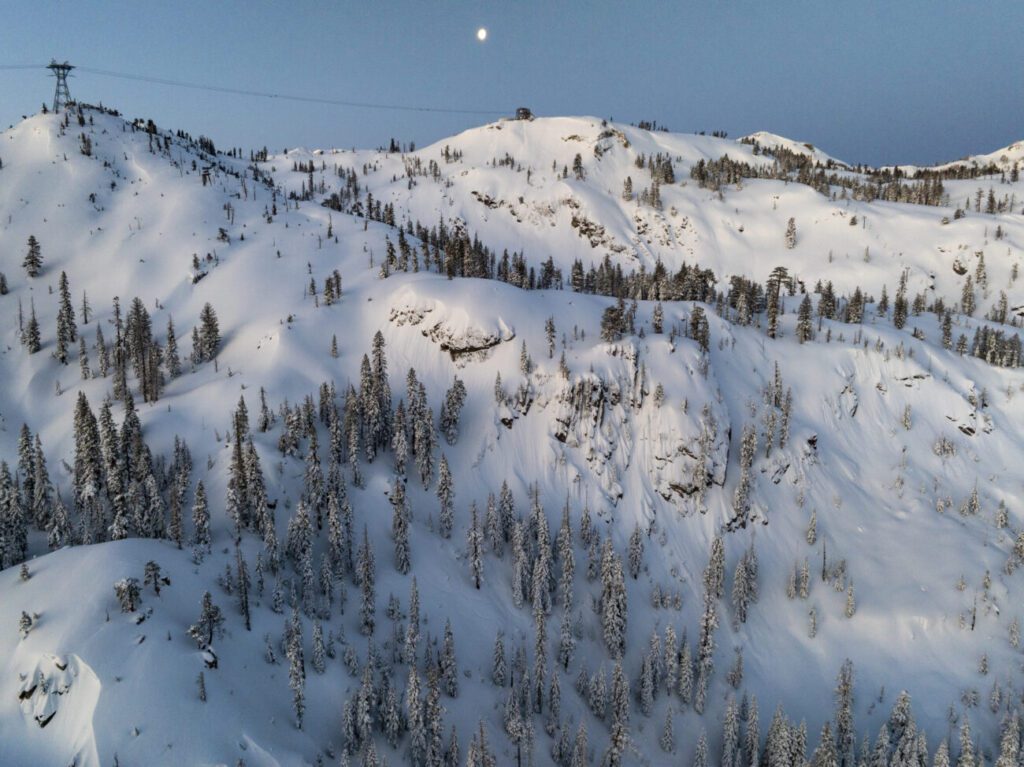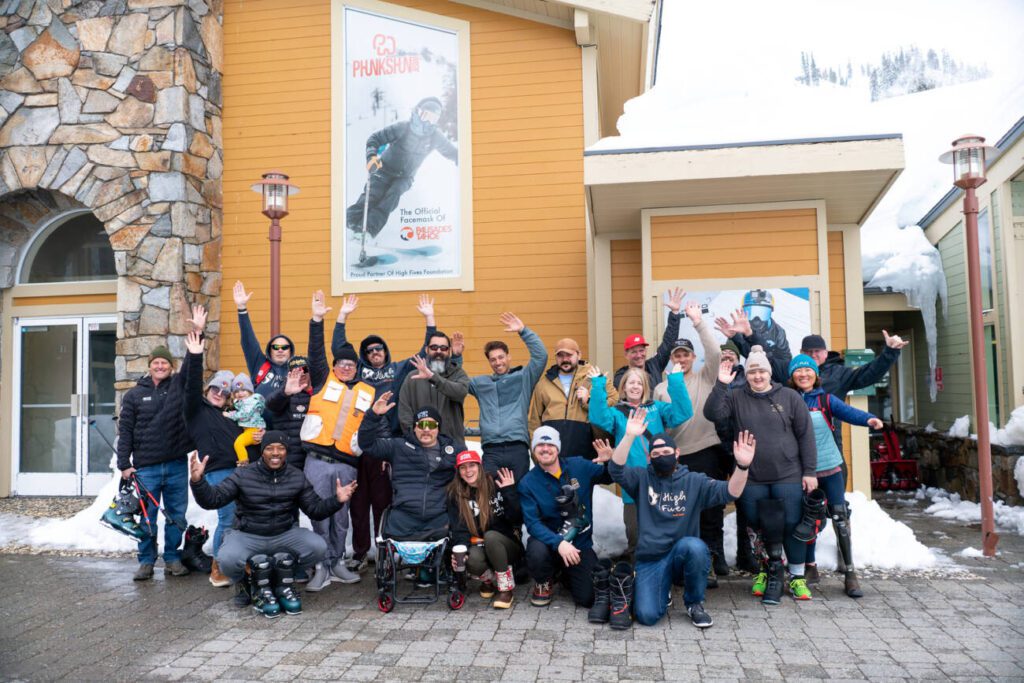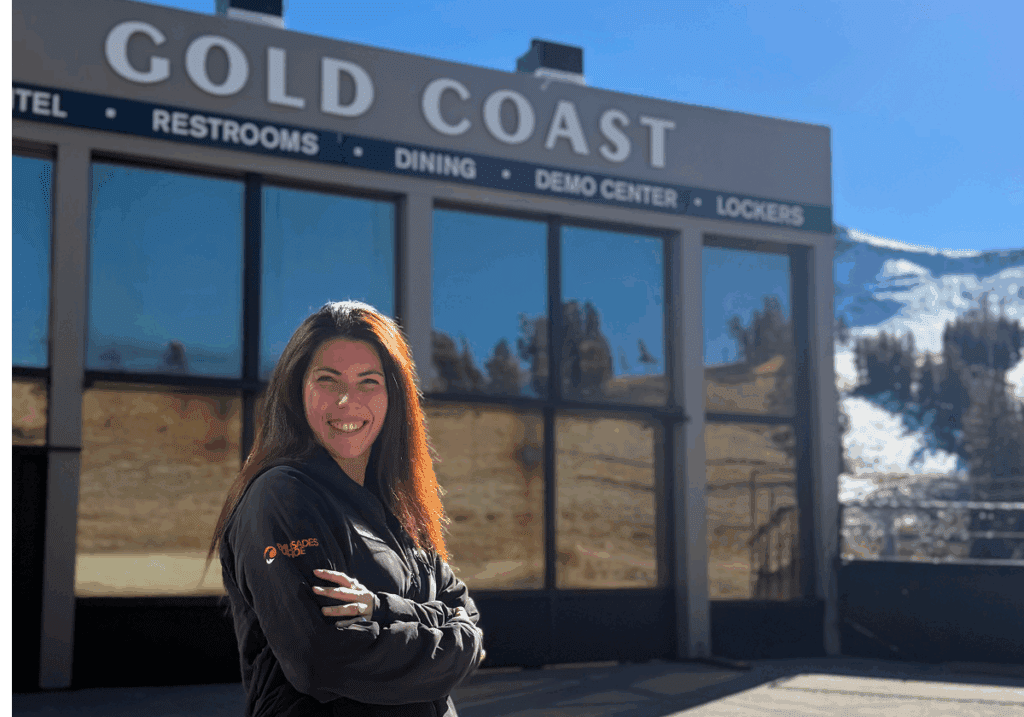A former freestyle skier named Troy Caldwell made history when, in the 1980s, he bought a huge chunk of rugged, mountainous terrain between Alpine Meadows and Olympic Valley, a piece of property that’s been the missing link to connect the two resorts.
On busy winter days, when Alpine’s parking lot fills to capacity, you may find a mustachioed guy in a white pickup truck driving skiers from their parking spot high up on his driveway to the base of the ski area lot. That’s Troy Caldwell, and he’s not just a friendly neighbor who turns his land into overflow parking. He’s the man who owns the entire mountainside between Alpine and Palisades.
Caldwell’s property stretches across the southeast-facing slope above Alpine Meadows Road, on the edge of the Granite Chief Wilderness, strewn with cliffs and steep faces. When the new Palisades Tahoe Base to Base Gondola connects the neighboring ski areas, it’ll be strung over Caldwell’s property. Linking the resorts has been a dream of his in the making for over three decades.

“Making the connection between the two resorts has always been a big part of our goal,” Caldwell says. “It just took us all a while to sort out how exactly we were going to do that.”
Caldwell grew up in California’s Bay Area and moved to Tahoe at age 19. He got a job checking lift tickets at Alpine Meadows starting in 1970 and later worked construction in the summers. He began competing in the growing sport of freestyle skiing—moguls, aerials—and he was a decorated member of the U.S. Freestyle Ski Team for six years in the 1970s, well before those disciplines became Olympic sports. In 1973, Caldwell met the woman who would become his wife, Sue, who went on to work in Special Tickets at Alpine Meadows for her entire career.
The couple got married and by the 1980s, they began looking for real estate to buy near Alpine Meadows. Their plan was to create a European-style ski lodge, a snowbound bed-and-breakfast inn with easy access to skiing, similar to what Olympic gold medalist Stein Eriksen had built in Deer Valley, Utah, at the Stein Eriksen Lodge. As luck would have it, Caldwell found a small five-acre piece of property on the north side of Alpine Meadows Road that had been owned by the railroad since the mid-1900s.

So, in 1988, Caldwell walked into the San Francisco office of the Southern Pacific Land Company and met with Brandon Mark, who worked in the railroad’s land division. Mark told Caldwell that they couldn’t subdivide the property—so five acres wasn’t an option—but if he wanted a 144-acre parcel of steep, mountainous terrain, that was up for purchase. Soon after, the terms changed: It was all 460 acres or nothing.
Sue and Troy talked it over and decided it was more than they needed and more than they could afford, but they decided to sell everything they owned—including the house they lived in—and take the plunge. “It was scary for us to make this giant move,” Caldwell says. “We didn’t think we could afford it or that we were even in the ballgame when the conversation started. But then it was reality, and we had to make some big decisions.”
The property also included the top of KT-22, the legendary chairlift at Palisades Tahoe. The ski resort had been paying the railroad company rent for use of the land. As the story goes, representatives from the railroad made a call to an accountant at the ski resort about the property going up for sale, but the message never got passed along to then-owner and resort founder Alex Cushing, who had been waiting years for a chance to buy the land. Instead, according to the historical book Tales from Two Valleys, written by Eddy Ancinas, the resort accountant said something along the lines of: “No, thanks. We rent it so cheap, I don’t think we’re interested.”
So, the Caldwells bought the property in 1989 for $400,000. “Everyone thought, ‘What great maneuvering,’” Caldwell says. “But we were just young kids in the right place at the right time. The railroad was motivated to sell and all of a sudden, I became a true buyer.”


Once Cushing found out about the sale, he wasn’t pleased. “It was extraordinary that Southern Pacific sold the land directly out from under us,” Cushing once said. “It doesn’t make any sense.”
Legendary ski writer Robert ‘Fro’ Frohlich wrote, in a 1995 article in Snow Country magazine: “Troy Caldwell has become the Forrest Gump of Lake Tahoe.”
“He kind of just stumbles along and ends up in these historical moments, and things always turn out,” says Larry Heywood, a long-time friend of Caldwell’s and the Ski Patrol and Snow Safety Director at Alpine Meadows for 17 years. (Heywood has been hired to conduct avalanche risk assessments on Caldwell’s property over the years.)
After they bought the land, Troy and Sue spent five years living in a non-winterized trailer on the property without running water or electricity during what Caldwell calls their “Daniel Boone era.” They got water from an often-frozen hose connected to a creek and heated their space with a propane heater built more for Arizona’s climate than Tahoe’s cold winters. “It was an interesting chapter in trying to survive,” Caldwell recalls. Eventually, they got the permits to build themselves a proper home on the land, where they still live today.
Negotiations between the ski resort and Caldwell have not always been smooth. Cushing sued Caldwell in 1995 over their lease agreement, but eventually, they worked out a trade deal. Caldwell would trade Cushing 70 acres of land in exchange for the old Headwall chair, but then Caldwell sued Cushing for breach of contract for failing to deliver the chairlift. “For many years, we’ve had to defend ourselves in a courtroom,” Caldwell says.
By then, the Caldwells’ plan for a B&B had evolved into something bigger. After traveling to European mountain towns and experiencing interconnected ski resorts, their vision was to create a base village for when the lifts at Alpine Meadows eventually connected to the neighboring resort in Olympic Valley. But at the time, the two resorts were owned by different companies. “It only made sense that the resorts would hook together, but unfortunately, the ownership of both ski areas weren’t on the same page,” Caldwell says.

So, they shifted to the idea of a private ski area, named White Wolf. In 2000, Placer County issued Caldwell a permit to build his own chairlift. A local homeowners’ association later sued the county for issuing him that permit, but, in 2005, the lift towers and cables went in, but construction slowed on the private chairlift as Caldwell weighed his options for a future interconnect between the resorts. To date, the chairlift has yet to operate—but that may be changing if Caldwell’s long-term plan comes to fruition.
In 2016, Caldwell submitted plans to Placer County for a 275-acre private-resort housing project on his land that would include the construction of dozens of fire-safe custom homes, as well employee housing units, a pool, an ice-skating rink, and two private chairlifts, including the one that’s already constructed.
After the Palisades Tahoe resorts came under the same ownership in 2012, the plan to physically link them has now become reality. Caldwell is the missing piece enabling the long-awaited gondola to connect the two mountains over his land. Roughly half of the Base to Base Gondola and its mid-stations are on property owned by the Caldwells.
“Sure, we could have sold the land for $50 million and moved to Tahiti,” Caldwell says with a laugh. “But we made the decision that this is our life, this is what we wanted to do. We wanted to finish the dream, connect the ski areas and do what we initially set out to do.”
Adds his friend Larry Heywood: “Troy is very tenacious. He is a visionary. When he sets his sights on something, it’s admirable what he’ll do to get it done.”
